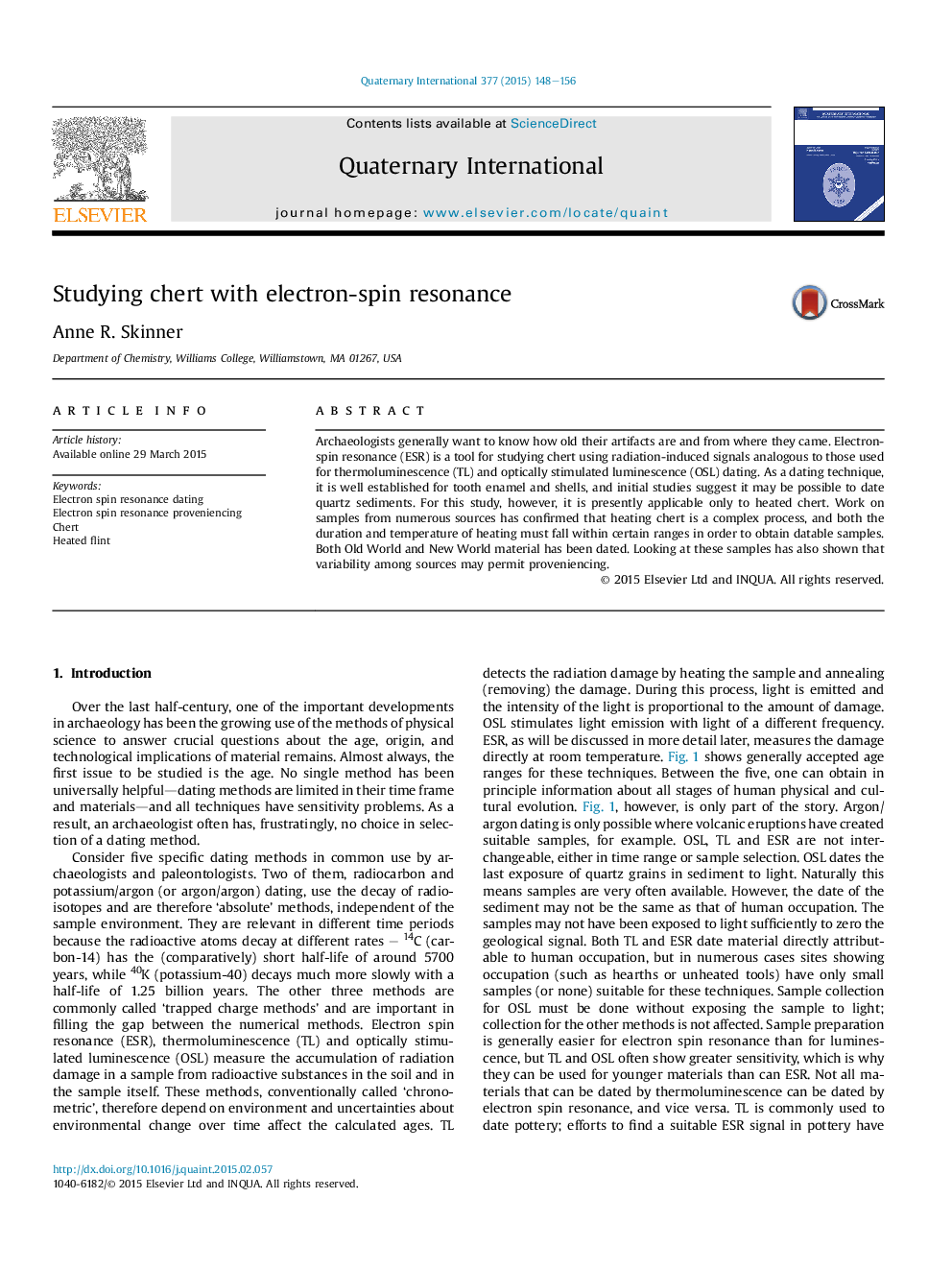| Article ID | Journal | Published Year | Pages | File Type |
|---|---|---|---|---|
| 1040734 | Quaternary International | 2015 | 9 Pages |
Archaeologists generally want to know how old their artifacts are and from where they came. Electron-spin resonance (ESR) is a tool for studying chert using radiation-induced signals analogous to those used for thermoluminescence (TL) and optically stimulated luminescence (OSL) dating. As a dating technique, it is well established for tooth enamel and shells, and initial studies suggest it may be possible to date quartz sediments. For this study, however, it is presently applicable only to heated chert. Work on samples from numerous sources has confirmed that heating chert is a complex process, and both the duration and temperature of heating must fall within certain ranges in order to obtain datable samples. Both Old World and New World material has been dated. Looking at these samples has also shown that variability among sources may permit proveniencing.
